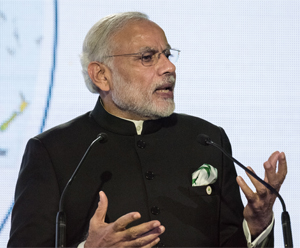
As China sneezes, will Germany catch a cold?

Germany’s economic slowdown in the second quarter of 2019 should serve as a “wake-up call”, warned German economy minister Peter Altmaier.
That Europe’s largest economy is experiencing a period of weakness spells gloom for the trading bloc, but also shows how the world’s largest economies are dealing with the effects of the U.S.-led trade war.
Traditionally, China has been instrumental to the growth of Germany’s export-reliant economy. Since 2016, the Asian nation has been Germany’s most important trading partner, with bilateral trade volumes amounting to €199 billion in 2018.
China is a major buyer of ‘Made in Germany’ goods, particularly high-value electrical products, optical equipment, and airplanes.
Germany’s car industry, which suffered during the global financial meltdown, has also recovered thanks in large part to a surge in Chinese demand for the top range of German cars. Today, China is the biggest market for luxury car brands including Mercedes-Benz, BMW, and Porsche.
But with China’s economy now stalling amid the trade war, will German exports be caught in the crossfire, and what will be the likely impact on Sino-German trade?
Sino-German trade: the pace slackens
China’s weakening domestic economy and the ongoing trade tensions simmering between Washington and Beijing are taking their toll on its growth. In 2018, the World Bank reported that the Chinese economy only grew 6.5 percent, the lowest rate since 1990.
That does not bode well for Germany, which for many years has relied on exports for its growth. Exports, dominated by cars and machinery, amounted to more than 45 percent of its gross domestic product (GDP) in 2018. And as Germany’s third-largest export market, China received €93 billion worth of German-made goods that same year.
However, the growth in the volume of trade between the two countries also declined in 2018, based on data from China’s General Administration of Customs. In 2017, the bilateral trade volume between China and Germany increased by 13.7 percent year-on-year, while the growth rate in 2018 was only 8.1 percent.
A recent survey by consulting firm EY also found that China’s mergers and acquisitions (M&A) activities in Germany have slowed — there were no M&A deals at all in the first half of 2019.
Overall, China invested a little over US$500 million (€448.6 million) into Europe’s biggest economy during this time, a sizable drop from the US$10 billion it invested in 2018.
China’s efforts to stimulate the economy through domestic reforms, including a possible return to support for state-owned companies and infrastructure, may further hit German exporters of manufactured goods. In addition, wages are rising in China, which means that foreign companies have lesser incentive to manufacture goods there.
Industrial production feels the pinch
With China’s slowdown taking its toll on German exports, Germany’s industrial production has also been affected.
Its economic ministry reported that output fell across the second quarter of 2019 by 1.8 percent compared with the first quarter of the year, driven by drops in metal production, and machinery and car manufacturing. “Economic activity in the industry continues to point downward,” the ministry said.
In June, Germany’s Bundesbank sharply downgraded its growth forecasts for 2019 and 2020 amid signs of an overall slowdown. Economists at the central bank expect German GDP to rise by only 0.6 this year, down from the 1.6 percent predicted last December.
Trade prospects: a stable outlook
While Germany’s economic growth may be slowing, its trade outlook remains stable, according to the DHL Global Trade Barometer (GTB), a growth index that provides an early indicator of the trade outlook based on key import and export data.
Although the country’s GTB index has edged downward this year, its September 2019 figure of 48 points indicates its trade growth outlook is still performing slightly better than the GTB world index this quarter.
Germany’s September GTB results revealed some lowlights, with land vehicles and parts, and personal and household goods deteriorating significantly over the previous quarter. However, the outlook for chemicals and products, basic raw materials, and high technology improved, and the machinery parts, and industrial raw materials sectors remained positive.
Signs are also mounting that Germany is considering adopting fiscal stimulus measures to counter any future recession. In August, Finance Minister Olaf Scholz suggested the government would aim to muster €50 billion of extra spending in case of an economic crisis.
There are also positive indications that, while the pace of Sino-German trade may be slowing, Germany is continuing to seek ways to deepen economic and trade ties between the two countries.
That is illustrated by Volkswagen’s intention to invest in electric vehicles — part of a $300 billion plan by global automakers — with nearly half of the money targeted at China. In the words of Herbert Diess, chief executive of Volkswagen: “The future of Volkswagen will be decided in the Chinese market.”
Dr. Stephan Wöllenstein, co-Chairperson at the German Chamber of Commerce in China, shares this more sanguine outlook. “After a very dynamic, almost euphoric growth phase in China in recent years, development reached a ‘new normal’ [in 2018],” he said. “The majority of German companies in China are expecting stable growth rates.”
But as Germany’s latest economic data shows, until the trade dispute takes its course, the country needs to do everything within its power to minimize the impact and uncertainty arising from the trade war.
MORE FROM THIS COLLECTION














 English
English